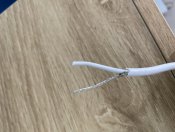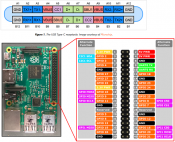JulianLights
Apprentice elf
- Joined
- Jan 5, 2019
- Messages
- 78
Hi everyone
I’m looking to connect my Raspberry Pi to one of my power supplies instead of using the ac plug. When I stripped the USB-C cable that came supplied with the Pi it had an inner sheathed cable and a bare wire wrapped around the inner sheathed cable (see pictures). Is there a standard polarity for these types of cables or a way for me to test it through the USB-C connection?
I’m looking to connect my Raspberry Pi to one of my power supplies instead of using the ac plug. When I stripped the USB-C cable that came supplied with the Pi it had an inner sheathed cable and a bare wire wrapped around the inner sheathed cable (see pictures). Is there a standard polarity for these types of cables or a way for me to test it through the USB-C connection?




